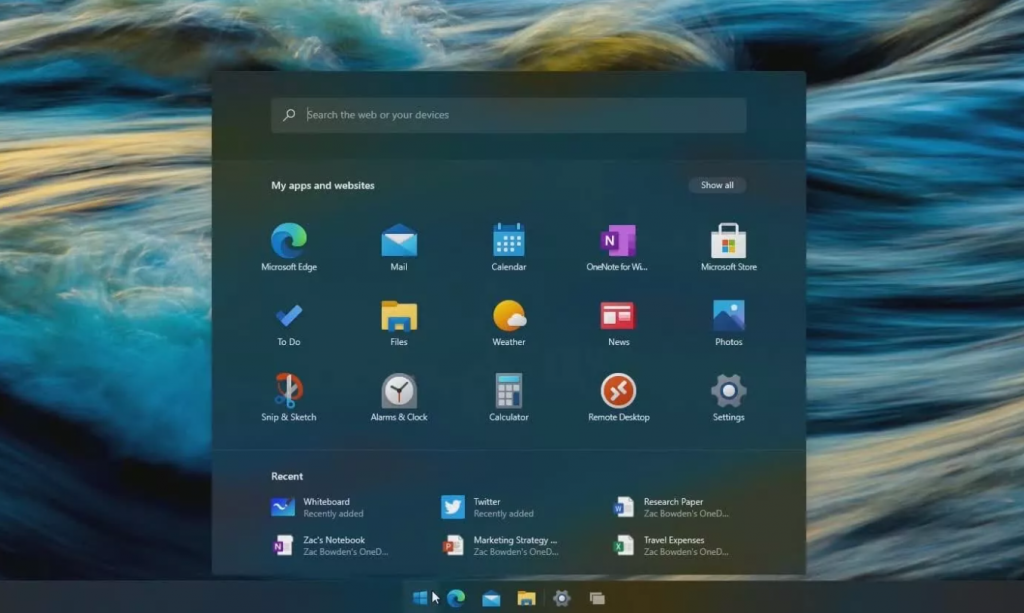
Bottom line: For the last few years, Microsoft has been building a competitor to Chrome OS, a lightweight variant of Windows 10 dubbed Windows 10X that could adapt to any modern device form factor. It shouldn’t surprise anyone that it won’t see the light of day, and it also means the Redmond company can focus on making Windows 10 better instead.
Microsoft’s Windows 10X project started out as a Chrome OS alternative, with a fresh interface designed around the web browser, new security model for running apps, faster update process, light enough to run for many hours at a time on inexpensive laptops with less beefy internals, and an adaptable shell that would work great on various modern form factors such as convertibles and 2-in-1s.
The project changed its scope over time, as Microsoft sought to make Windows 10X the perfect operating system for foldable devices such as the Surface Neo. In typical Microsoft fashion, the company teased this product when it was far from ready, only to postpone it to 2020. Then the pandemic hit, and the whole thing was put on the back burner while the plan for Windows 10X was that it would debut on single screen clamshell devices.
Now it looks highly unlikely that Windows 10X will ship this year, if ever. According to Brad Sams over at Petri, Microsoft is shifting resources from the project to focus on Windows 10, and Windows 10X will join Windows RT and Windows 10 S in Microsoft’s graveyard of failed experiments. The Redmond giant’s silence on the matter is also a telltale sign that its priorities have changed since last year, and a leaked build of Windows 10X calls into question the target of that effort.
The news isn’t surprising when you consider that Windows 10 already powers a diverse ecosystem of over 1.3 billion monthly active devices, at least according to Microsoft’s official stats. Adoption hasn’t exactly gone as planned, but support for Win32 apps is a big reason why consumers and organizations have switched to the new operating system, to the point where Windows 7 is mostly kept alive by organizations that are willing to pay for extended security updates.
By contrast, Windows 10X was designed around the use of cloud-powered web apps, as Microsoft wanted to make it attractive for casual users, educational institutions, and small businesses — in other words, a Chrome OS killer.
Win32 support would not have arrived at launch, and Microsoft was reportedly not content with the performance and impact on battery life early on, leading to the functionality being postponed until 2022 at the earliest. This alone would have made Windows 10X a difficult proposition, as we’ve seen with Windows 10 S and Windows RT before it.
Moving forward, Microsoft’s attention and resources are focused on delivering a “sweeping visual rejuvenation” for Windows 10, also known as the “Sun Valley” update.
This means that at least some ideas behind Windows 10X are making their way into Windows 10, such as a more coherent interface where you won’t see icons made using several design languages, some of them dating back to Windows 95. And the company is also working on making Windows 10 easy to configure and optimize for your specific use case.
That’s only the beginning, as Microsoft is also looking to remove some of the bloatware that makes a standard Windows 10 installation larger than it should be (advice to Microsoft: make some of those rules enforceable to OEMs). These will continue to live through the Windows Store, which is also being reworked to offer an improved layout, better stability for large downloads such as games, and more freedom for developers in how they package, update, and organize their apps. The Redmond company is also testing ways to promote web apps as first class citizens on Windows 10.
Beyond that, Windows is getting various new features and quality of life improvements, some of which will arrive via smaller updates that will have less potential of breaking the entire OS.
Some are less interesting, like the Weather and News widget for the taskbar, but they can fortunately be disabled. Others can’t come soon enough, such as support for AAC Bluetooth audio, DirectStorage for faster game loading, Auto HDR functionality similar to the Xbox Series X, and who knows — maybe even a way to run Android apps similar to Chrome OS.





























